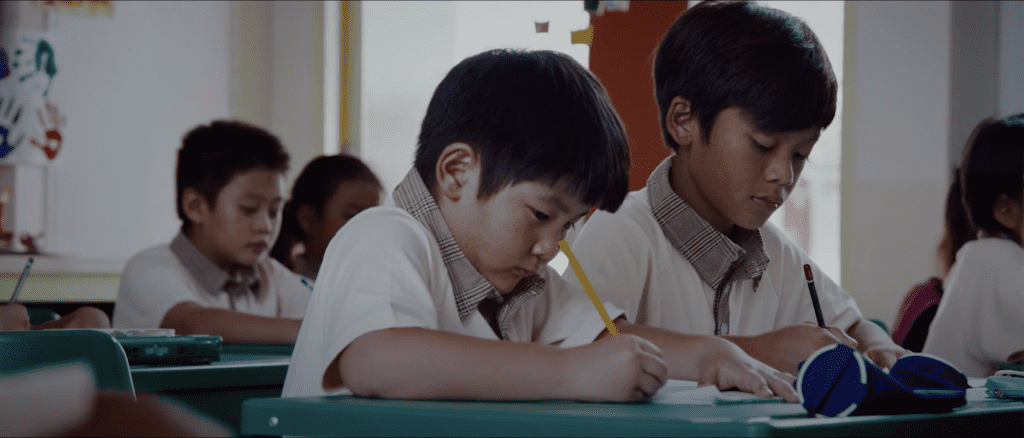Printed on the back of all school exercise books in Singapore is a list of five maxims, the cornerstones of our national education. On the list, number 3 reads: “We must uphold meritocracy and incorruptibility”. In this meritocratic vision, all should be provided with equal opportunity to succeed.

Yet, the truth is, some children in Singapore get a better headstart than others. This relates to the role that the family’s socio-economic status and reach of safety nets plays in predicting the outcomes for children. Children with stronger social support structures may also better navigate external challenges and obstacles. For instance, children from low-income families tend to face financial challenges (often in tandem with health or personal issues) that render them less able to provide resources for their children to maximise their potential.
From affording the fees for preschool or enrichment classes to prepare a child for Primary One, or simply finding enough downtime to devote to parent-child interaction, parents working blue-collar jobs that demand long hours are fighting an uphill battle. As a result, their kids rarely receive the same developmental attention that others gain before starting school. Hence, more support is needed to level the playing field for all children to have equal education.

Ensuring low-income, at-risk students don’t get left behind
So what does education currently look like for at-risk youth? Today, rapid digitalisation has been accelerated due to the onset of Covid-19, with schools and students alike having had to make significant adjustments.
As schools transitioned to home-based learning (HBL), at-risk students face difficulties in following suit. Technology, intended to democratise information and a rich learning resource, cannot fulfil its role in education when low-income students face obstacles in gaining or sustaining digital access, from procuring a device to maintaining stable broadband connection.

Academic pressures are not the only things these kids face either. With parents working long hours or entirely absent, these at-risk youth shoulder tremendous responsibilities at home, often with exacting tolls on their mental health. This may take time and energy away from their educational development and weigh their self-confidence down, creating a cycle that is hard to break.
What’s more, with home-based learning (HBL) resuming last month and the June holidays now here, many children lose access to support programmes essential to their wellbeing, from free meals in school to counselling sessions. More than ever, assistance for these children is crucial; early and holistic intervention is the key to breaking intergenerational poverty.

What help do low-income families need? On a fundamental level, simply providing daily necessities can help families stay afloat, alleviating financial burdens such that parents have greater bandwidth to address emotional needs. Beyond this, families may require support in enhancing parent-child relationships or stimulating learning.
With most parents trying to balance potential job insecurity and childcare, access to essential resources for their development is further compromised. Help is needed to fill the gaps for these at-risk youth.
How can your company support at-risk children and youths?
Systemic problems require large-scale organisational efforts. As a company, your collective impact can offer myriad resources to support at-risk youth. Businesses can donate money or necessities over long periods, giving the family sufficient time to focus solely on the child’s development, rather than one-time donations being a mere stopgap to keep one’s head above water.
For example, SPH’s ST School Pocket Money Fund provides monthly financial aid to schoolchildren in Singapore. Our very own Champion of Good (conferred in three consecutive editions) recognises the further financial stress COVID-19 has created and provided additional payouts during a period of immense need.
Monetary contributions are one thing, but companies also have a wealth of manpower and niche expertise to serve low-income children. You can help these children meet specific developmental aims at every stage of their growth and development.
What’s most crucial is filling their time during their free time, such as the June holidays, with activities that address specific developmental gaps. Adequate supervision is vital, and targeted online programmes like storytelling sessions to boost literacy or tutoring sessions are the best option if their parents are busy working.
Your employees can lend expertise to these programmes, engaging children directly. Finally, companies can provide digital infrastructure for NPO-run programmes such as Engineering Good to give them a boost.
Let’s not forget our older youth either. Company leaders can empower youths with their stories, and when this is coupled with tangible opportunities, your business is sure to inspire. For GIC, launching their programme GIC Sparks & Smiles ensured just that. Last year’s Champion of Good gave out financial bursaries to low-income university students, mentoring these youth with engaging leadership programmes. The students in turn guided younger children-at-risk to reach their potential, creating a positive cycle that can combat the negative one often present in disadvantaged families.

Finally, companies are well-poised to tackle the ever-present digital divide amongst youths. As the pandemic continues to bear down on Singapore, your organisation can aid efforts to increase digital access and literacy amongst these at-risk youths, ensuring that HBL can be carried out smoothly without disruptions to learning.
Why not take a leaf from Facebook’s book? The media conglomerate partnered with TOUCH Community Services on their initiative ‘Digitally Ready Families’, sustainably sponsoring laptops for children and youth from low-income families. Staff volunteered their skills, teaching cyber wellness and device management. Companies like Facebook possess rich expertise in digital media, and are well equipped to provide youths with opportunities for access and understanding of it.
With your company’s commitment, we can make education in Singapore accessible to all. Perhaps our actions can inspire these youth to believe in the final maxim on that list at the back of school exercise books: “We have confidence in our future.” Let’s give these children their chance to strive towards bright and promising dreams!
Company of Good connects organisations to do good strategically, sustainably and impactfully. Find out how your company can get involved at www.thecompanyofgood.sg




















